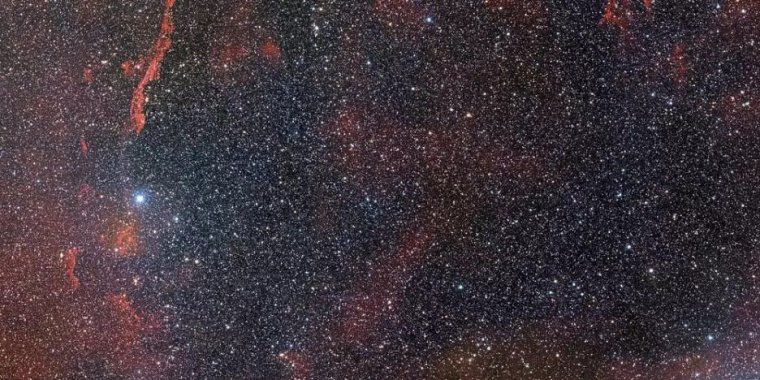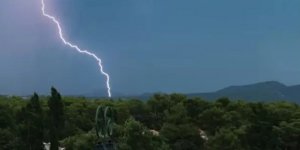| News / Science News |
Rare view of the remnant of a supernova from the year 185
The image of the tattered shell of the first recorded supernova was captured by the U.S. Department of Energy-fabricated Dark Energy Camera, DECam. The camera is mounted on the U.S. National Science Foundation's Víctor M. Blanco 4-meter Telescope at Cerro Tololo Inter-American Observatory in Chile.

DECam imaged RCW 86, the remains of the first recorded supernova, witnessed in the year 185. Photo: CTIO/NOIRLab/DOE/NSF/AURA; T.A. Rector (University of Alaska Anchorage/NSF’s NOIRLab), J. Miller (Gemini Observatory/NSF’s NOIRLab), M. Zamani & D. de Martin (NSF’s NOIRLab)
A ring of debris, named RCW 86, is all that remains of a white-dwarf star that exploded more than 1,800 years ago and was recorded by Chinese astronomers in the year 185 as a "guest star."
The DECam image confirms RCW 86 as the resulting structure of this historical supernova, SN 185 (supernova, year 185).
Astronomers previously believed that it would take about 10,000 years for such a supernova to form the structure seen today. This would have made RCW 86 far older than the supernova observed in the year 185.
The image of RCW 86 helps shed light on how the remains of the supernova evolved over the past 1,800 years. DECam's wide-field vision enabled astronomers to create this rare view of the entire supernova remnant.
The estimate is in line with a comparatively youthful age of about 2,000 years, which strengthens the link between RCW 86 and the guest star observed centuries ago.
While an accurate age estimate brought astronomers one step closer to understanding this unique stellar feature, one mystery still remained: How did RCW 86 expand so fast?
The answer was uncovered when X-ray data of the region revealed large amounts of iron, a telltale sign of a type of blast in a binary star system when a dense white dwarf siphons material from its companion star to the point of detonation.
SN 185 would have awed observers while it shone brightly in the night sky. (U.S. National Science Foundation)
YOU MAY ALSO LIKE





